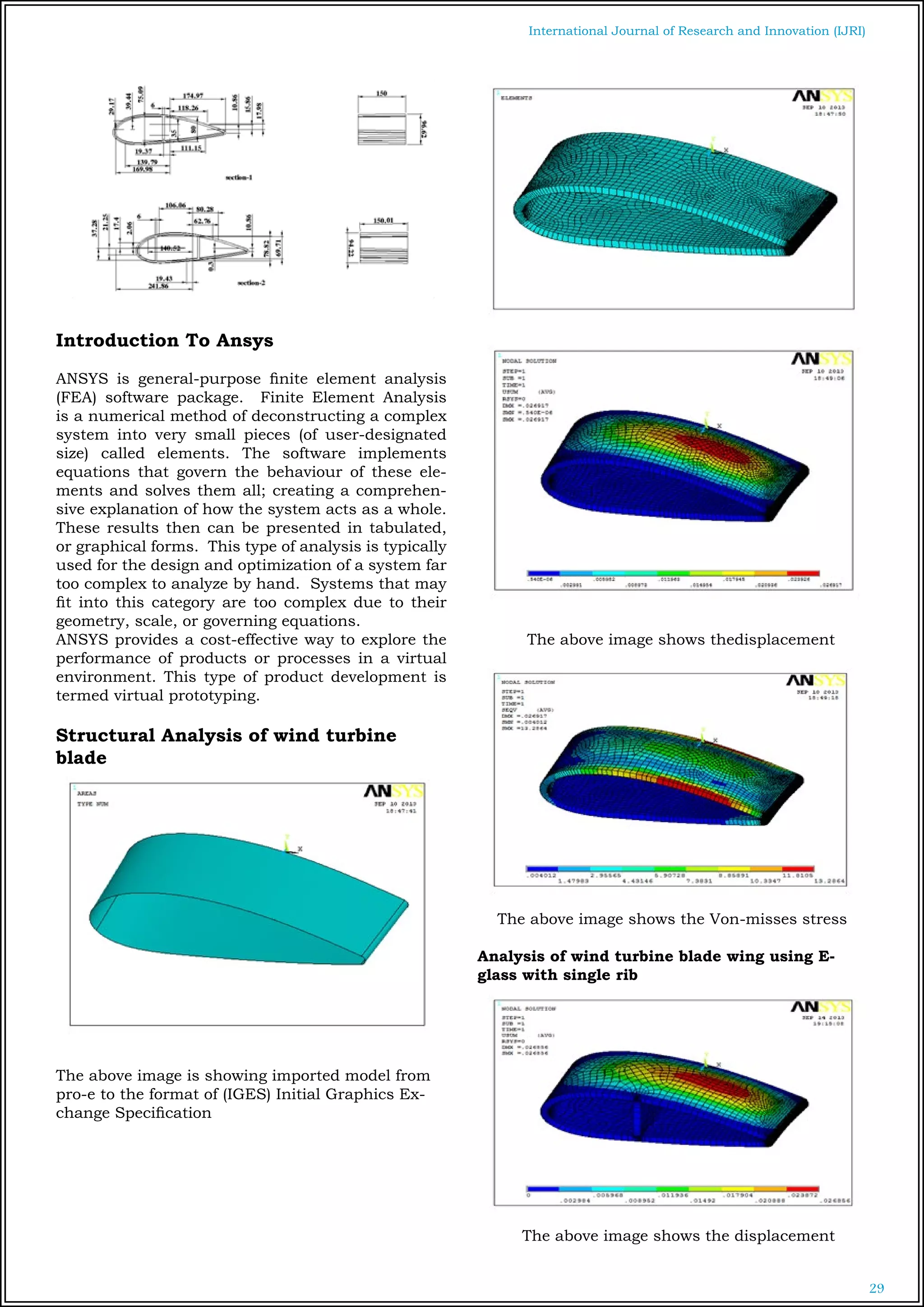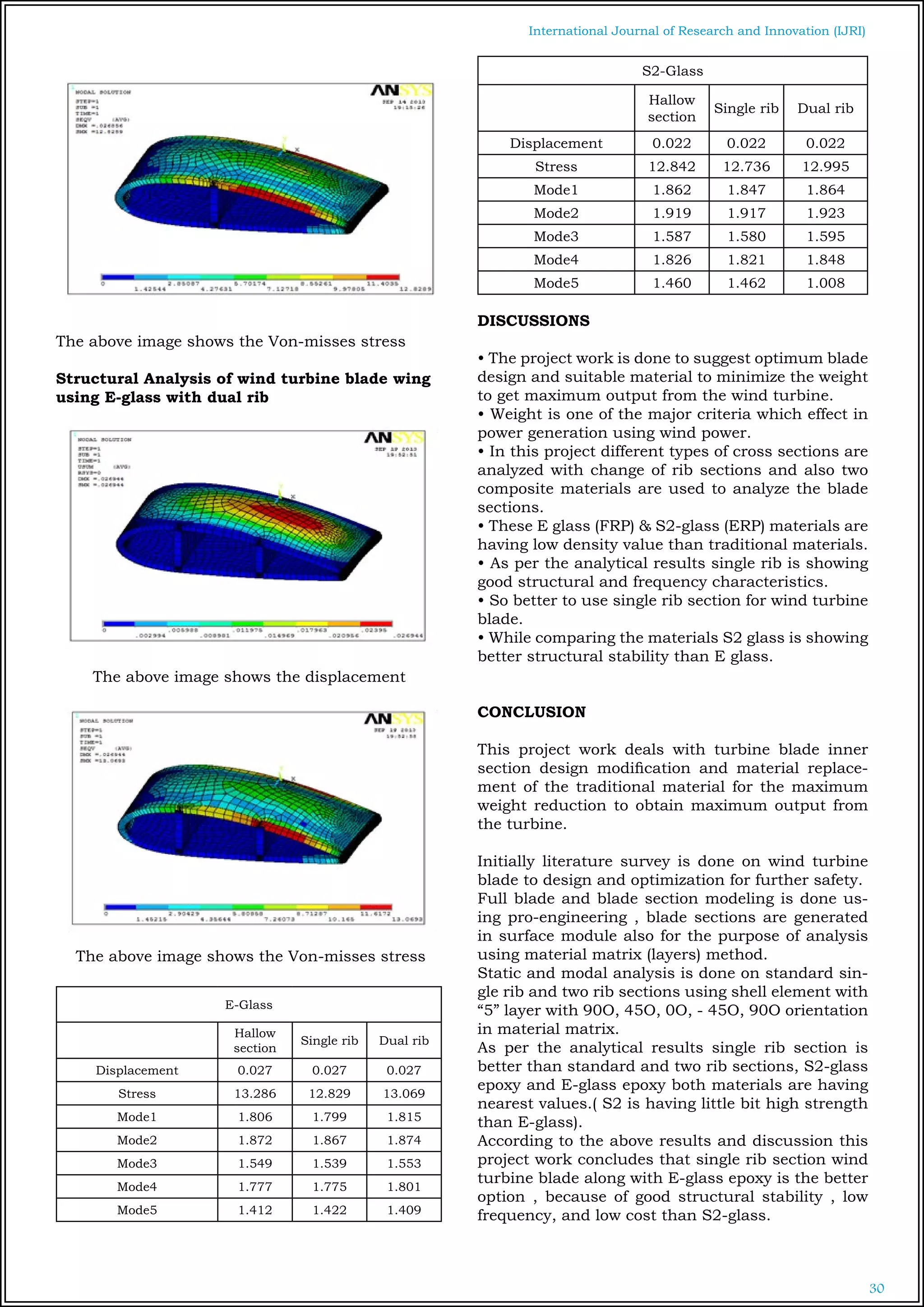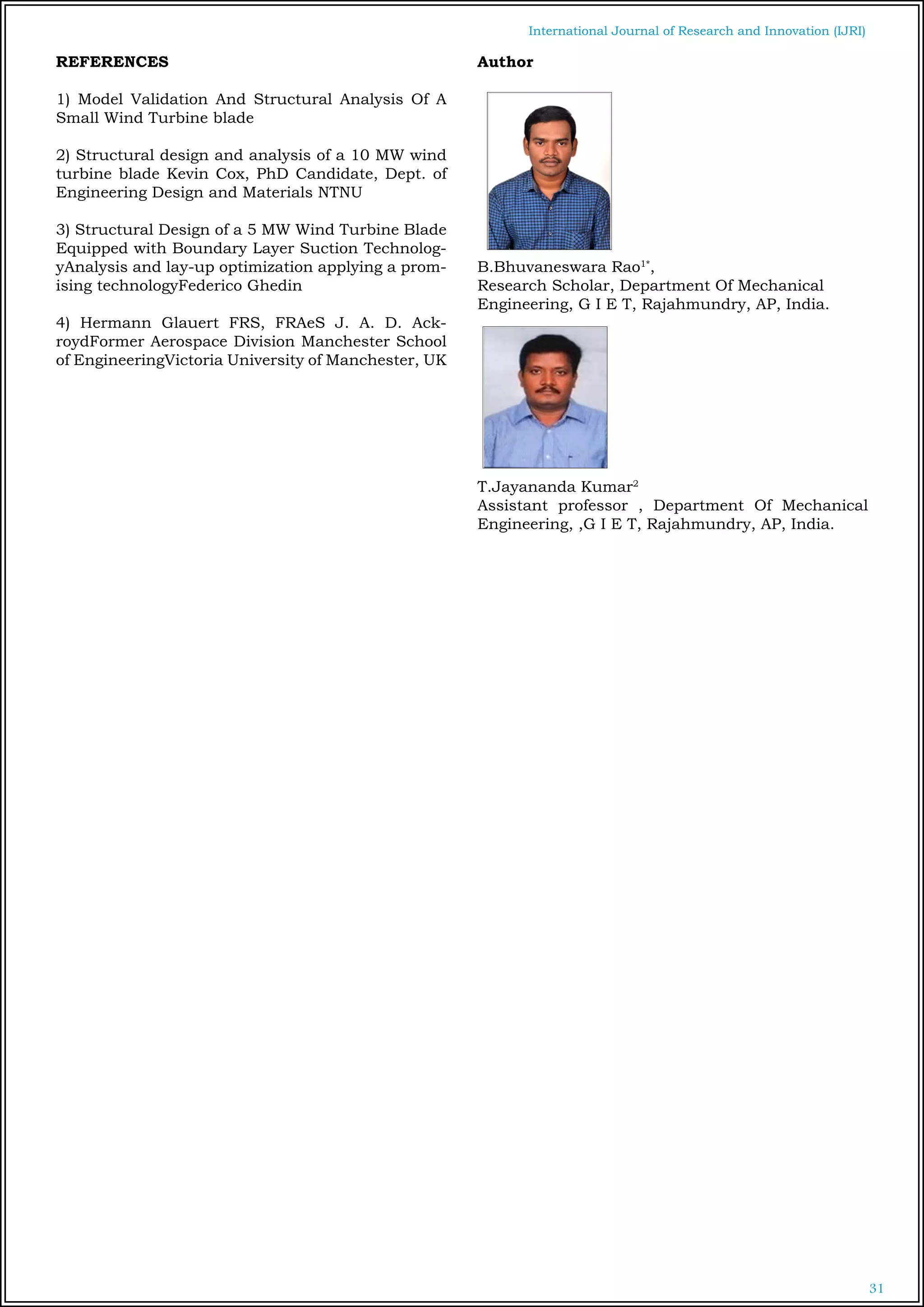The document discusses the design and material optimization of wind turbine blades, highlighting the evolution of wind energy utilization since its inception and the advancements in turbine technology. A study is presented on finite element analysis (FEA) to optimize blade design using composite materials, focusing on weight reduction while maintaining structural stability. Results indicate that a single rib design utilizing s2-glass epoxy demonstrates superior performance compared to traditional materials and configurations.

![27
International Journal of Research and Innovation (IJRI)
Where _ [kg/m3] is the air density, S [m2]
is the swept
area of the rotor (thusS=_D2/4), V [m/s] is the wind
speed and cP[-] is the coefficient of performance. Th-
epower output then scales with the square of the ro-
tor diameter.The mass instead scales with the cube
of the rotor diameter, in fact creating a limitabove
which increasing the size is not economically prof-
itable anymore. Due totechnology improvements,
throughout the years the real coefficients have been
2.155and 2.6, respectively.
The new designs focus on other aspects than “size”.
For instance, improving theefficiency of the blade
reduces the fatigue loads, increasing the life cycleof
thecomponents, as well as more accurate internal
blade design can reduce the amount ofmaterial uti-
lised, making the rotor lighter and cheaper.
Advanced aerodynamic technologies are also em-
braced to achieve better and cheaperresults.De-
velopment of smart rotors, winglets, flaps, gurney
flaps, micro tabs and vortexgenerators is a daily ba-
sis topic. All these technologies are meant to control
or limitthe harmful loads, leading to less fatigue and
therefore longer life cycle or lessmaterials.
Enercon E-48, blade tip winglet WhalePower blade
leading edge
Blade structural design
Actiflow Preliminary Studies
Actiflow already applied successfully active BLS tech-
nology on cars and in order toimprove wind tunnel
testing. In 2007, Actiflow started focusing on the ap-
plication ona wind turbine blade. The strong belief in
this technology and the knowledge gatheredby paral-
lel applications translated into a patent.
This patent describes how the centrifugal effect giv-
en by the rotation of the rotorcreates a pressure dif-
ference between the two sides of the panel through
which suctionoccurs. It does not give a specific final
solution or describe a particular blade speciallyde-
signed for BLS applications.
It is rather a collection of thoughts and considera-
tionson how apply this technology, evaluating and
giving as example several solutions.For instance, the
precise flap wise position on which apply the porous
material is notDefined as well as how the room of the
internal channels is utilized
In addition, the utilization of some slots instead of
the porous material surface is takeninto account, as
well as how the latter should be applied on the blade
Since the application for the patent, internship and
graduation projects incollaboration with Delft Uni-
versity of Technology have been developed, refin-
ing thechoices of the real possible applications and
brightening the achievable improvements.](https://image.slidesharecdn.com/ijri-me-01-005-160413062827/75/DESIGN-AND-MATERIAL-OPTIMIZATION-OF-WIND-TURBINE-BLADE-2-2048.jpg)



